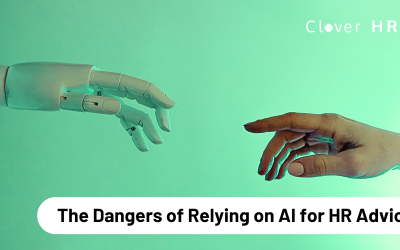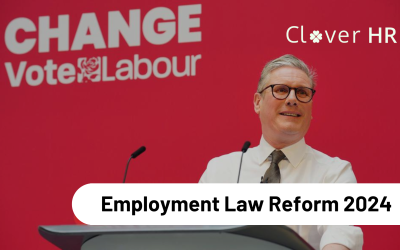In the UK there are three different types of employment statuses under the Employment Rights Act 1996. Make sure you’re aware of yours and, as an employer, the status of each of your workforce.
What is an Employment Status?
A person’s employment status is what defines the rights and employment protections an individual is entitled to whilst at work and, therefore, determines what is required from the employer.
Under UK employment law, there are three key types of employment status:
- Employees working under a contract of employment, who have full employment right
- The genuinely self-employed, who are independent contractors
- Workers are individuals who are in between employment and self-employment status
The Importance of Employment Statuses
Employees will have different rights depending on their employment status. Therefore, businesses need to understand the different types of employment status so the right one can be used at the point of hire. Deciding which status applies will also have a significant impact on the tax implications. It is possible to check your employment status with the HMRC tax tool.
What are the Different Types of Employment Status?
Each of the three different types of statuses in UK law comes with its own responsibilities and rights. Make sure you understand the differences between each category.
Employees
An employee is a person who works under the conditions of a contract of employment. To have employee status:
- An individual is obliged to complete work themselves
- The employer needs to be obliged to provide the work and the employee is obliged to accept the work
- The employer needs to have some control over the way the employee carries out work
Employee rights include:
- protection against unfair dismissal
- statutory redundancy pay
- maternity and paternity leave and pay
- parental leave
- the right to request flexible working
- rights under TUPE
- rights to preferred payments in the event of an employer’s insolvency
Self-Employed
A person is self-employed if they are their own boss, are running their own business and are solely responsible for its success. They are not protected by the employment rights enjoyed by employees, simply because they don’t have an ‘employer’ in the same way.
If someone is self-employed then the following will be present:
- They are responsible for how and when they work
- They are able to send someone else to do the work, if appropriate
- They are able to work for different clients and charge different fees
- They don’t get holiday or sick pay when they’re not working
- They submit invoices once their work is done
A self-employed worker may have a contract in place, which will set out the obligations or rights they have in relation to the business that pays them for their work.
Worker
A worker is an individual who is in between employee and self-employed status, and can be seen as a ‘halfway house’.
A person is generally defined as a ‘worker’ if:
- They have the arrangement to perform work or services
- They have to turn up for work even if they don’t want to
- They cannot subcontract their work out to other people
- They aren’t doing the work as a limited company
Typically, those within the gig economy (casual workers and zero-hour contract workers), agency workers, and seasonal workers fall into the worker status.
The rights that workers are entitled to include:
- Receiving the National Minimum Wage
- Statutory minimum holiday pay
- To not work more than 48 hours a week on average, or have the option to opt out of this right if they so choose
- To not be treated less favourably if they work part-time
- Protection against unlawful discrimination
- The statutory minimum length of rest breaks
Contractors and Freelancers
When it comes to contractors and freelancers the employment status can become slightly harder to identify. However, it is crucial you understand whether you fall under the self-employed or employed status so you can have a clear picture of your legal rights.
If you are an employee, worker or self-employed and receive work through an agency, you may have a contract for services. Under this agreement, you may be considered a contractor. But, during the duration of your contract, your original employment status may change.
Often, if you are a contractor or freelancer and are your own boss, you are self-employed. However, if you’re unsure it’s best to check.
Working Out Your Employment Status
Knowing your employment status is crucial when it comes to your legal rights. If there is ever a discrepancy over your status between you and your employer, an Industrial Tribunal is arranged to make a formal decision.
This decision is determined by evaluating four key areas: your control, integration within the company, whether your obligations are shared and the economic reality of your employment.
My Status is Not Clear
Due to the nature of some working arrangements, some people are unsure whether they are a worker or an employee. The uncertainty usually occurs if you are:
- On a zero-hour contract
- A bank worker
- A locum worker
- Working through online platforms (‘gig economy’)
- On placement
- Completing an internship
- On a rolling or fixed contract
- An employee shareholder
- A peripatetic with no fixed base
If you fall into any of these categories, it is recommended that you seek advice and check your official status.
Employment Status Disputes
Typically, employment status issues occur when there is a dispute between a business and an individual working for it. In addition, the growth of the gig economy where payment is per job, and a lack of guaranteed hours and job security for workers, has led to a stream of tribunal cases. Uber recently lost their appeal over their driver’s employment status, ruling them as ‘workers’ rather than Uber’s claim that they are self-employed.
It is an employer’s responsibility to correctly establish the employment status of their workers, that is whether they directly employ them or they are self-employed. When hiring someone new it is essential for businesses to think about the kind of work required by the individual in order to select the right type of employment status. Different types of employment statuses demand different things from the employer and employee.
If you would like further guidance or support on this matter or require advice on other people management matters please contact Clover HR on 0121 516 0299 or email us at info@cloverhr.co.uk.


